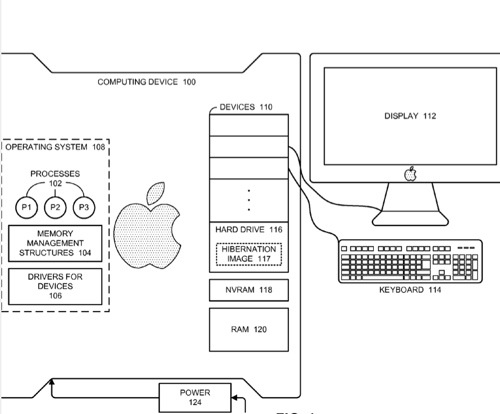Two Apple patents at the US Patent & Trademark Office show that Apple is dedicated to making your Mac “wake up” faster whether or not it’s equipped with a solid state drive (which is faster than the traditional hard disk drive).
Patent number 7899923 is for a method and apparatus for waking up a sleeping system. It relates to a method and an apparatus for waking up a sleeping system that resides on a computer network.
One embodiment of the present invention provides a system that wakes up a sleeping target system located on a target LAN (Local Area Network) from a remote system located on a remote LAN. Because the sleeping target system is in a sleep state, it receives packets of a lower-layer protocol which cannot be used by the remote system to directly send packets to the sleeping target system. During operation, the remote system creates a wake-up packet. The remote system then uses a second protocol to send the wake-up packet to a relay agent located on the target LAN. Upon receiving the first wake-up packet, the relay agent uses the lower-layer protocol to send a second wake-up packet to the sleeping target system, which causes the sleeping target system to wake up. Dieter W. Siegmund is the inventor.
Patent number 7900074 involves a method and apparatus for quickly reanimating devices from hibernation. It relates generally to techniques for saving power in computing devices. More specifically, the present invention relates to a method and an apparatus for quickly recovering from a hibernation mode, wherein the active state of a computing device is preserved while power to the computing device is turned off.
During operation, the system creates a hibernation image for the computing device by identifying processes that do not have visible user interface elements, and generating the hibernation image so that processes with visible user interface elements can be reanimated from the hibernation image first to get the computing device reanimated quickly, while the identified processes are reanimated later. Next, the system stores the hibernation image in non-volatile storage. The system then causes the computing device to enter the hibernation mode, wherein the active state of the computing device is preserved in non-volatile storage while power to volatile storage is turned off. The inventors are Dean Reece and Joseph Sokol.
— Dennis Sellers



